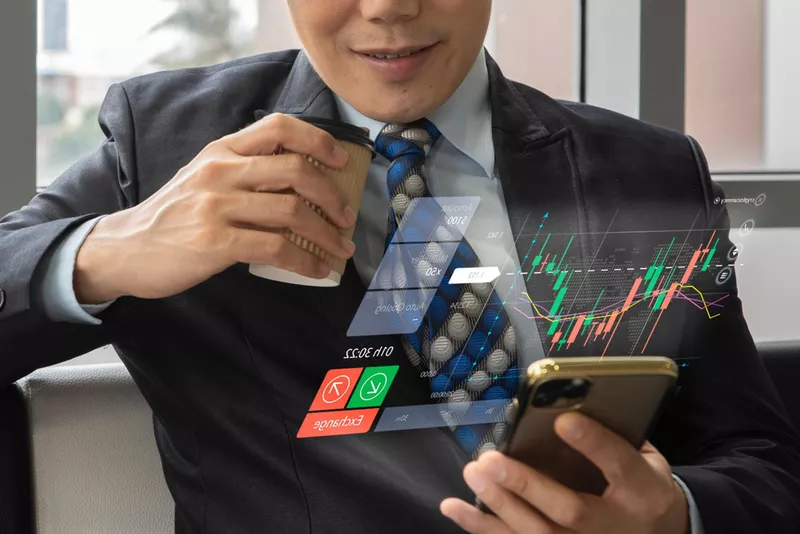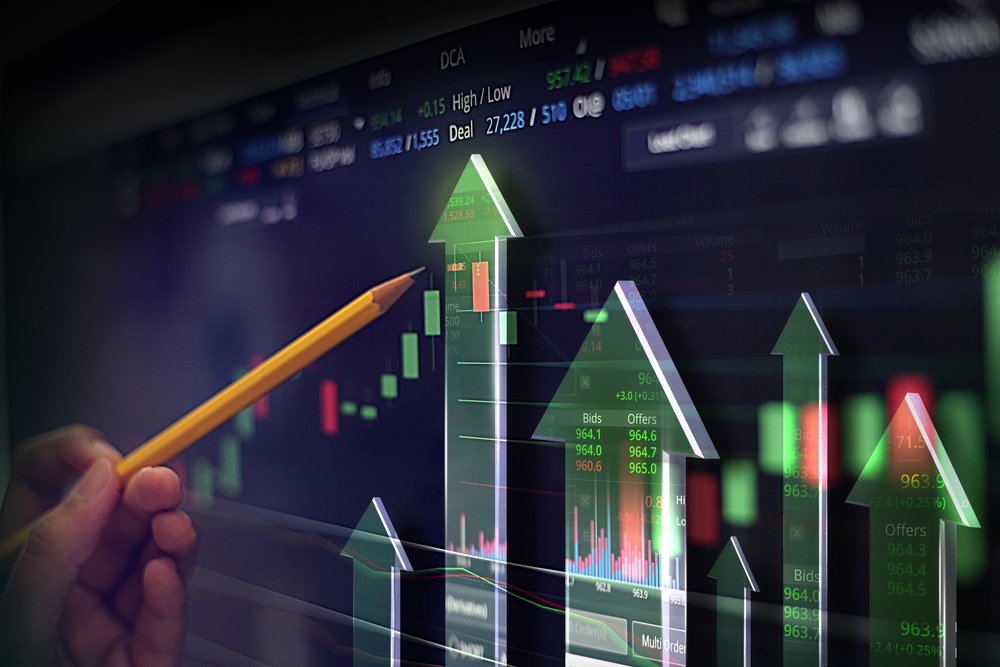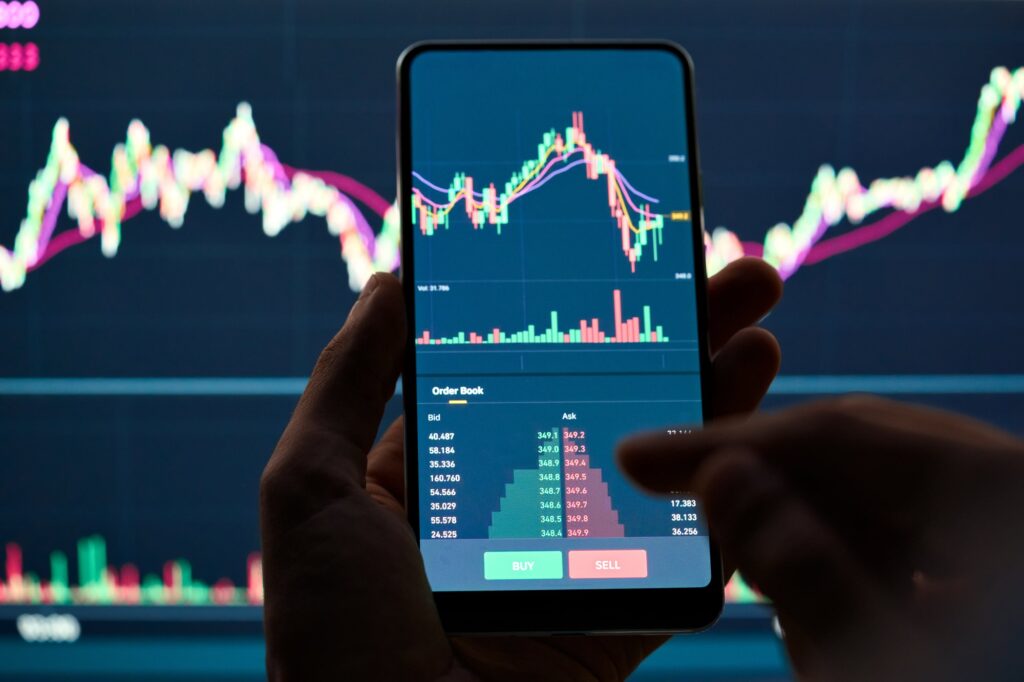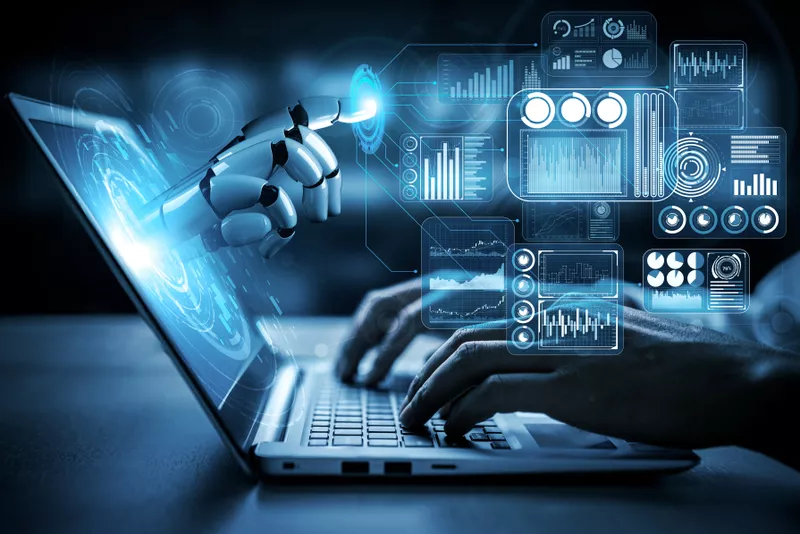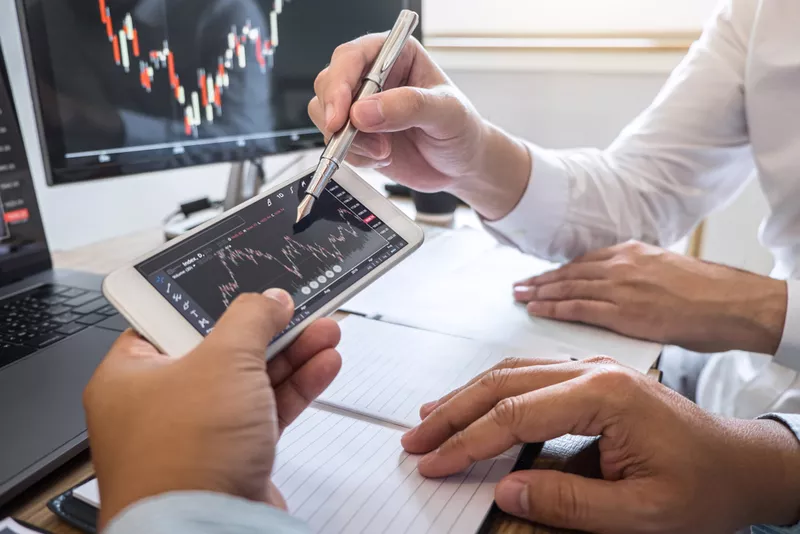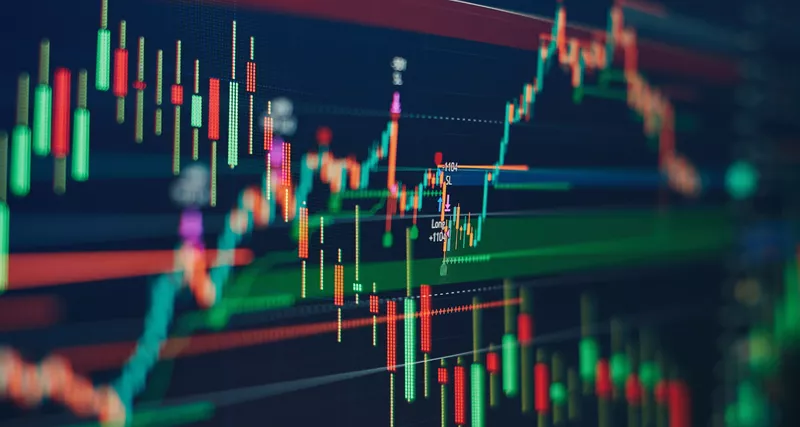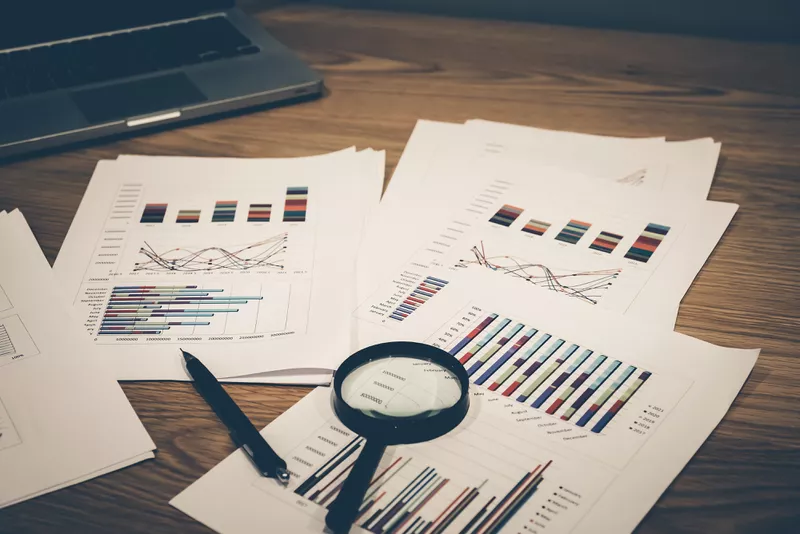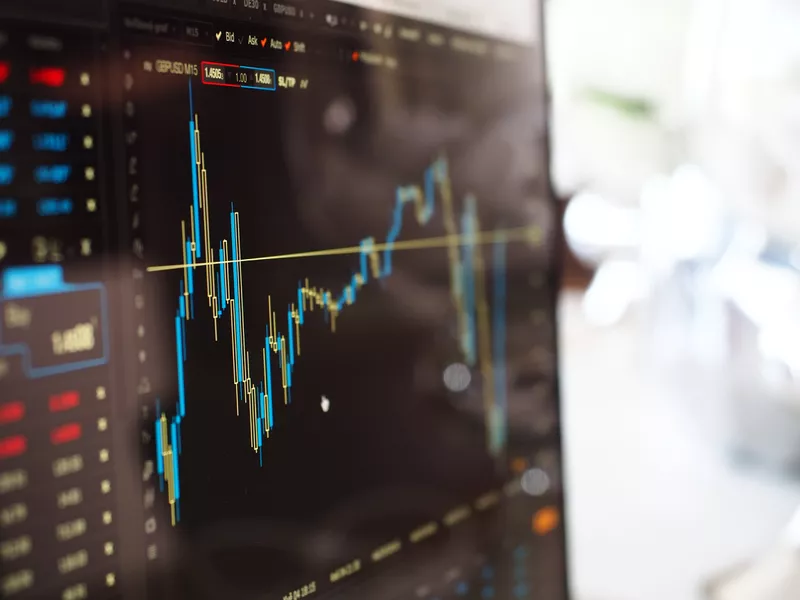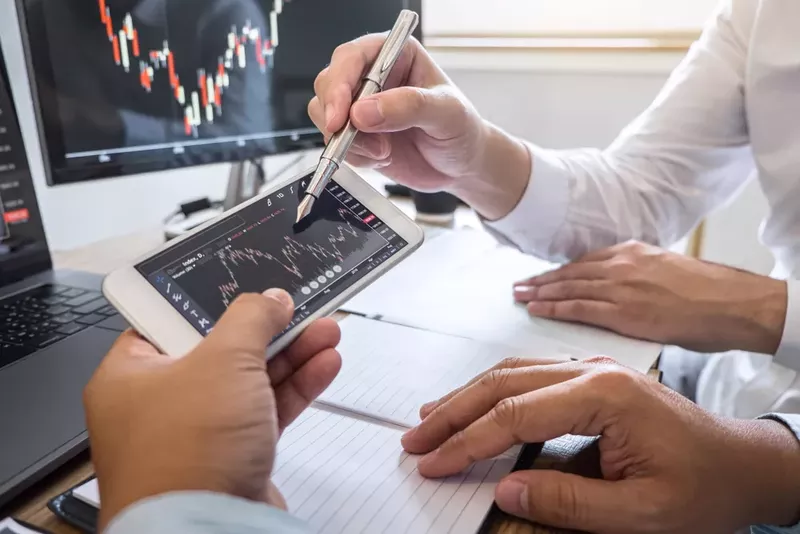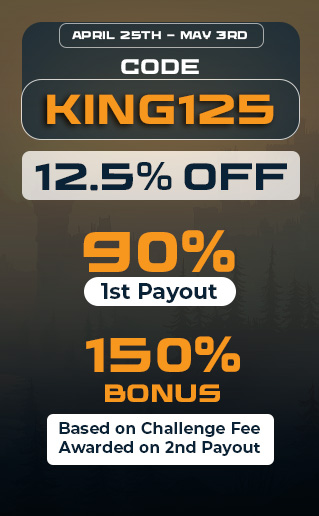The popularity of AI trading has grown immensely. Today, automated trading bots can predict and execute trades in seconds. How do they do that? AI trading bots use algorithms and machine learning models to analyze vast amounts of data in real-time—all of which speeds up the decision-making process.
One of the biggest benefits for an individual trader using AI is how it takes the emotions out of trading. Therefore, if you use bots as part of your trading strategy, you won’t have to worry about FOMO, greed, or revenge trading. That said, keep in mind that not all trading platforms allow the use of bots.
How exactly is AI revolutionizing the Forex trading landscape, portfolio management, and risk assessment? Here, we’ll take an in-depth look at the benefits and challenges of AI trading, its impact on market dynamics, and how you can leverage this technology to gain a competitive edge.

The Rise of AI in Trading
AI first popped up in the trading world in the early 2000s, when computers began to play a central role in financial markets. Back then, it was quite rudimentary. AI trading systems primarily focused on rule-based algorithms and simple decision trees.
Over the years, however, there have been significant milestones and breakthroughs that have redefined how markets function. For instance, we now have machine learning algorithms that can dissect colossal amounts of data in seconds. The result is a wealth of patterns and insights that may otherwise have slipped through the cracks. Moreover, by using AI, traders can also generate sophisticated risk management models while executing multiple orders (high-frequency trading).
Here’s how artificial intelligence has revolutionized trading in the last two decades:
Supercharged Data Analysis
AI algorithms are wizards at processing vast volumes of data. As a result, traders can make on-the-fly decisions based on real-time information. This helps to increase profit potential by:
- Executing trades with pinpoint precision
- Making lightning-fast trades by setting up your conditions in the AI bot
Better Predictions
No one can predict the market perfectly. However, AI will supply you with solid research. It analyzes historical data to predict price movements and generate better forecasts. Armed with this foresight, you can make optimally informed trading decisions.
Trade Automation
Thanks to AI, Forex traders don’t need to monitor the market round-the-clock. Expert Advisor (EA) trading bots are there to automate various tasks for you. These include setting up execution orders, putting stop losses, and calculating position size. Essentially, AI lets you free up valuable time and reduce the potential for human errors.
Altogether, AI can make trading not only more efficient but also more accessible to traders of all backgrounds. Even beginners can use automated and semi-automated bots to plan their trades.
What Are AI Trading Bots?
AI trading bots are nothing more than computer programs designed to autonomously execute strategies. As such, these software applications are equipped with advanced machine-learning algorithms. Although bots tend to be most prevalent in cryptocurrency trading, they can be applied to any market—be it stocks, Forex, or commodities. In fact, there are thousands of trading bots available now that you can use to your advantage.

How AI Trading Bots Work
- Data Analysis. They look at historical and current market data. This includes price movements, trading volumes, social media sentiment analysis, and economic indicators. This data forms the foundation for trading decisions.
- Pattern Recognition. Trading bots score big in identifying recurring patterns and trends. That’s because the sheer volume and complexity make it difficult for a human to spot all the patterns.
- Decision-Making. You need to always set predefined trading strategies or rules for the bot. Based on these, they’ll analyze the patterns and determine when to buy or sell. Advanced bots can also execute complex strategies and adjust to market conditions.
- Risk Management. Every trading bot will ask for risk management conditions. You can define the parameters as per your risk appetite.
- Automation. Bots can execute trades without human intervention—and respond to market changes in real time. As a result, you don’t have to worry about missing trades.
- Backtesting. Before deploying a bot in a live market, always test it out in a demo account. Conduct extensive backtesting to see how good the bot is at predictions. The bot can simulate your strategy on historical data, which will help you evaluate its performance and fine-tune parameters. Most importantly, backtesting indicates how well-prepared the bot is for real-world trading.
Types of AI Trading Bots
Every AI trading bot is different, catering to specific trading strategies and objectives. Let’s explore some common types of bots.
Expert Advisors (EAs)
Expert Advisors are specialized bots often used in the Forex market. You can set the rules according to your trading strategy and style. These bots will look at technical indicators and fundamental data to execute the trade as per your conditions.
Their biggest benefit is in removing emotional biases from trading. Because they follow predefined rules, it eliminates the potential for impulsive trading. Further, EAs can operate 24/7, so traders can take advantage of opportunities in different sessions.
Despite these attributes, EAs are not fool-proof. Their success depends on the quality of programming, the underlying trading strategy, and the ability to adapt to dynamic market conditions. You need to carefully backtest and exercise proper risk management to use them effectively. With The Funded Trader (TFT), you can use semi-automated EAs for risk management.
Trend-Following Bots
These bots are designed to ride the waves of market trends. They operate on a straightforward principle—when a trend emerges in the market, capitalize on the momentum to generate profits. Trend-following bots use technical indicators, such as Moving Average Convergence/Divergence (MACD) lines, along with support and resistance levels to calculate whether the market is more bullish or bearish. Additionally, they can look for micro intra-day trends to capitalize on small price movements.
A major benefit of using these bots is how they remove one of the biggest hurdles—getting in early on the trend. Humans are liable to miss out on some trends or take time to analyze breakouts. AI bots, on the other hand, follow predefined rules, making it easier to jump on the trend.
Do note, however, that these bots are not fool-proof. They may struggle to perform in markets with frequent reversals or in periods of low volatility when a trend may not be clear. Therefore, use careful risk management to prevent large drawdowns.
High-Frequency Trading Bots
The growing number of trades now being executed by AI bots makes sense if you look at the sheer trading volume. Forex trading turnover is currently massive—adding up to around $7.5 trillion daily. This means trades are happening in bulk and at a lightning-fast pace.
High-Frequency Trading (HFT) bots are designed for this specific purpose, being able to execute orders in milliseconds by leveraging AI. (For perspective, it takes 100 milliseconds to blink an eye.) The goal of HFT bots is simple—capitalize on those minuscule price discrepancies that exist for only brief moments in time. These discrepancies can arise from various sources, such as market data delays, order book imbalances, or even news events, and HFT bots pounce on them before human traders have a chance to react.
Nonetheless, HFT has not been without controversy. Critics argue that it can contribute to market instability, as rapid-fire trading has the potential to exacerbate price fluctuations during market turbulence. Even so, HFT remains a significant force in today’s trading landscape.
Sentiment Analysis Bots
These bots scour the internet for news headlines, social media posts, and other data sources to gauge the overall positive or negative sentiment surrounding a particular currency. It can be a complex task, so it’s better to use this bot as a predictive indicator.
The Status of AI in Trading
The current status of AI in trading is nothing short of transformative. It has evolved from a niche experiment to a big player in the Forex and cryptocurrency markets. Today, AI’s role in trading has reached unprecedented levels, reshaping how we approach trading.
The main driver of its growth has been the exponential improvements in computing power and advances in machine learning algorithms. At present, AI systems can process vast datasets within seconds, uncover hidden patterns, and make data-driven decisions faster and more accurately than ever before.
Here are some key aspects of AI’s current role in trading:

Predictive Power Gives AI Greater Accuracy Than Human Traders
AI excels at predicting market trends and price movements because of its computing power. It uses complex algorithms to look at historical data. This is something that humans cannot do as efficiently. Furthermore, it monitors markets 24/7 and executes trades at greater speed. This speed is particularly advantageous in a market where split-second decisions can mean the difference between profit and loss.
It Does a Deep Dive on Advanced Quantitative Analysis
AI trading bots can perform advanced quantitative analysis, exploring intricate relationships between various market factors. This deep dive into quantitative data has become a much-needed tool for executing trades with precision.
AI is Indispensable for Portfolio Management
Imagine looking at multiple charts to track various currencies and crypto tokens every day? It’s a very stressful task—and not particularly efficient either. Jumping between different charts can also be time-consuming. That’s where AI scores. AI trading bots continuously analyze market performance, tracking opportunities and helping you rebalance and adjust your trading portfolio to align with the trend. This doesn’t just increase the potential for returns—it also helps you manage risk a lot more effectively.
Bots are Shaping the Forex Market
AI-driven trading has increased market efficiency. For instance, it executes trades swiftly by exploiting arbitrage opportunities—directly increasing liquidity in the market by ensuring buy and sell orders are always available. It also helps narrow bid-ask spreads and benefits all market participants by reducing trading costs.
That said, it has some negative impacts on the market too. Rapid trading contributes to short-term volatility, especially during market events. This has sparked debates about market stability and whether a regulatory framework may be needed to ensure fairness and transparency.
Are AI Trading Bots Allowed in Prop Firms?
The use of AI trading bots is not without controversy. On the one hand, it helps predict and execute trades with higher accuracy. On the other hand, it also contributes to market volatility. This raises crucial questions about fairness and competitiveness.
For this reason, proprietary trading firms discourage the use of fully automated AI trading bots. This makes sense because prop firms offer a fair playing field to all traders—whether they’re beginners or experts. Everyone can compete in the prop firm’s challenge to win a funded account, whereas the use of AI bots can significantly skew the results in favor of some traders. That said, prop firms do allow EAs for account management.

Regulatory Framework
A regulatory framework is for maintaining fairness, transparency, and market integrity, thus avoiding market manipulation by large investors. Regulators worldwide are actively working to establish guidelines and monitor AI use in trading, with several key developments:
- US lawmakers introduced a bill in June 2023 proposing a National AI Commission Act to study the country’s approach toward AI. The bill aims to regulate the AI industry and address the risks associated with the technology. Because of the potential threats of an unregulated AI landscape, lawmakers are working with experts, government officials, and industry representatives to find a solution.
- In the EU, consumer protection groups have urged regulators to investigate AI models—especially generative AI. The aim is for regulators to assess AI’s risks and vulnerabilities to consumers.
- Australia conducted a sudden eight-week consultation in June 2023 to assess current “high-risk” artificial intelligence tools. The government is collecting feedback on how to support the “safe and responsible use of AI.” Based on this, it will decide whether to take a voluntary approach—such as ethical frameworks—or institute specific regulations.
- In August 2023, Spain became the first country in the EU to establish a task force for regulating AI. It’s now working to ensure that AI development in the country is “inclusive, sustainable, and citizen-centered.”
- Meanwhile, China has already launched new AI regulations. The 24 guidelines include measures that require platforms providing AI services to register with the government and undergo a security review prior to public release. The government has also mandated labels for artificially generated content.
Prop Trading Policies
Every prop firm has its own rules when it comes to trading with AI. It varies, based on the specific policies and guidelines of the firm. Some allow the use of automated systems for certain aspects of trading, such as risk management
FTMO allows the use of trading robots (EAs) for some challenges. However, if traders use EAs from a third party, they run the risk of having the exact same conditions and strategies as other users, who may also be using the same bot. Furthermore, FTMO may deny an account if you exceed their maximum capital allocation rule.
E8 allows EAs—provided these are not high-frequency EAs or others abusing the market feed. Another point to note is that the EA’s strategy must be unique, meaning that multiple users cannot use the same third-party EA.
TFT allows EAs, provided you buy an EA-enabled account, with the. Trade Manager EA available on the Standard, Royal, and Knight challenges. These are some features you can leverage with their Trade Manager:
- Open and close trades
- Quickly calculate your position size using the lot-size calculator
- Save time and avoid switching between different applications
- Determine position sizing
- Review the status of your open trades
This offers huge benefits, as you won’t need to constantly monitor the charts or be tied to manual trading. Our traders use the Trade Manager to juggle multiple trades and positions.
Pros and Cons
The debate around the use of AI trading bots in prop firms is multifaceted. Let’s weigh the advantages and disadvantages of this practice.
Advantages of AI trading bots:
- It’s more efficient. AI trading bots can process large amounts of data and execute trades faster and more accurately than a human can.
- You can implement advanced risk management strategies with an EA to protect your capital.
- You can diversify your trade with bots. They can trade across multiple currencies and markets simultaneously.
- AI trading is completely emotion-free. This is a big advantage as bots don’t have the emotional biases that often affect human traders. As a result, there’s no risk of greed and fear coming in the way of your trades.
Concerns and drawbacks:
- The biggest concern with AI is its lack of human judgment. An AI bot may struggle in highly unpredictable market conditions, where seasoned traders could predict the sentiment more accurately.
- Over-relying on a trading bot is not ideal. Beginners should work toward developing their own skills.
- As mentioned earlier, there are a number of regulatory challenges. Several countries have raised concerns about AI’s ethics and safety.
- High-frequency AI trading has been implicated in market manipulation. HFT generally comes into play when economic data is released—and when the fast reaction of bots can place thousands of trades in milliseconds. For this reason, there’s considerable volatility around major news events.
Future Trends and Considerations
Despite being around for some two decades, it’s still early days for AI. However, its future is filled with potential, especially in the following areas:

Advanced Machine Learning
There’s a promising path for AI trading bots going forward, thanks to the advancement of machine learning techniques. Already sophisticated AI algorithms are likely to see significant improvements.
Quantum Computing
Quantum computing delivers unparalleled computational power. For example, it can tackle complex problems, such as optimizing trading strategies, risk management, and portfolio optimization. Moreover, quantum computers have the ability to review infinite possibilities simultaneously and produce an intricate data analysis. These capabilities can revolutionize how we approach algorithmic trading.
Predictive Analytics
AI is set to become even more adept at predicting market movements, which will empower traders with valuable insights.
The Ethics of AI
This is a hotly debated topic. How do we make AI trading fair, transparent, and responsible? It’s ethical to use an AI trading algorithm that doesn’t discriminate against specific market participants—whether unintentionally or otherwise. That said, it should be our shared responsibility to provide equal access and opportunity to every trader.
Transparency is equally essential. Traders must disclose their use of AI strategies and share risk management procedures. A set of ethical guidelines for AI in trading can ensure transparency and may help avoid market manipulation.
Tips for Choosing an AI Trading Bot
Trading with a bot can give you a lot of financial freedom. Nonetheless, there are still several factors to consider when choosing a trading bot.
- Look at its functionality and uses. Can it be customized according to your strategy? Does it allow backtesting? Is it compatible with different trading platforms? Ensure that the bot aligns with your trading goals.
- Look at the bot’s security, namely encryption protocols and two-factor authentication. How securely does it handle your data?
- The bot should have a reliable uptime record and minimal downtime.
- Go through the bot’s reviews to gauge how reputable it is. For instance, look at its historical results to see if it’s generating profits consistently. Furthermore, stay away from companies that promise unrealistic gains.
- Evaluate how easy it is to use. It should have a user-friendly interface that will make managing your trades easier.
- Consider how active and helpful its customer support is. Check how many channels they are active on, such as email, phone, and social media.
Trade Responsibly with AI
AI in trading has come a long way. And although it has some clear advantages and capabilities that humans cannot match, there is still debate surrounding its ethics and potential industry regulation.
Taking this all into account, in the exiting world of Forex trading, it’s advisable to treat bots with caution. And if you do use them, be sure to have a thorough understanding of their pros and cons.
TFT allows EAs for account management ONLY. This means you can input your strategy, risk parameters, lot size, and entry and exit criteria. Based on this, the trade manager EA executes the trades automatically. We do not allow fully automated trading. To access TFT’s trade manager, make sure to buy an EA-enabled account. TFT’s community uses EA bots to automate trades as per the set conditions.
Ready to harness the power of EAs in your trading journey? Join The Funded Trader’s Challenge today.







